BABY TRICYCLE
Introduction
Children love their tricycles. As they grow old enough to ride, they enjoy their first tricycle, a memory that stays with them for a long time. Children enjoy little moments associated with their tricycles. Whether cycling around the compound with friends or feeling like the responsible little helper by riding to nearby stores to bring small household requirements, children and their tricycles are inseparable.
What Age Can a Toddler Learn To Peddle?
From around 1 to 2 years old, a toddler will have developed the gross motor skills needed to start learning to pedal a tricycle – although all children develop at their own pace.
A tricycle offers an early opportunity to learn how to pedal.
“With a tricycle, your toddler doesn’t have to have mastered balance,” explains Suamya (a Crèche manager). “Being able to pedal without needing to balance can help children progress more quickly. And, of course, learning to pedal is a great step towards bike riding.”
Pedalling strengthens your toddler’s leg muscles for walking and running and helps with coordination, so it’s a great skill to practise.
“Tricycles look like the bikes that older children ride, so this is great for his or her confidence,” adds Saumya.
Tricycles with a detachable parent steering handle enable you to push while your toddler builds up to full pedal power. Then, from around 24 months, your toddler should have the muscle strength to pedal more independently.
Benefits of Riding a Tricycle
Feeling of Independence
Tricycles enable kids to ride on their own and take control by themselves; the self-control of the motor skill builds up their confidence to do things independently.
Enhances Coordination & Balancing Skills
Coordination and balancing skills are developed in a child when they are mastering their steering skills. It helps to develop hand-eye coordination when taking turns, avoiding obstacles and ring bells. It also trains their leg-arm muscles when they are climbing up and down the tricycle.
Learn to Explore
As kids gain more control over riding on a tricycle, they are encouraged to take the initiative to start their own new adventures. They can explore different corners of the house, backyard or parks when they can drive independently. I notice my kids especially like competing with each other when riding tricycles and enjoy transporting little objects on their tricycles' rear baskets. All these activities are the learning stage to take the initiative to do things independently without their parent's assistance.
Boosts Confidence
This is for sure that when you learn something new and then gradually start doing it all by yourself, then your level of confidence is bound to go high. We all want our children to learn things perfectly and be confident, and the activity of cycling is an excellent start.
How Do I Choose a Tricycle?
As a parent, selecting proper toys to assist your child’s development is often troublesome and sometimes stressful. So many questions pop up in your mind, and the most important one is: HOW DO I CHOOSE A TRICYCLE?
This is where you need to be careful.
- Your little one should be tall enough to reach the pedals comfortably. So, if the child has to stretch to reach the pedals, there is no way he will enjoy riding a tricycle. Also, his feet must touch the ground while seated on the tricycle. After all, the braking mechanism of a tricycle involves touching the foot to the ground. If his feet doesn’t touch the ground, he might find it hard to stop the bicycle and is even prone to falls.
- You will want to find a tricycle that is not too heavy for your child to carry around if you want them to stay on it.
- The handlebars also have to be placed in a way that is easy for your child to use, such as adjustable handlebars.
- Choose a tricycle that is made of non-toxic materials. You can ensure that it is made of ABS plastic and should have a straight frame and a pedal guard.
- Choose an attractive colour, so your child feels like getting on it. You can also use any non-toxic material to decorate the tricycle to keep them engaged.
If you want to buy a tricycle that is also safe
- You can also add padding to reduce the possibility of your child being injured by the steering and braking components.
- If you have a tricycle made of plastic, then it is important to make sure that the seat is adjustable, and it will also be good if it has a footrest attached to the base.
5 tips to help keep your child injury-free while riding a tricycle:
-
Be ready. Only get a tricycle once your child is physically able to handle it. Most children are ready around age 2-3 years.
-
Go low. Look for a tricycle built low to the ground with big wheels. This type is safer because it is less likely to tip over.
-
Helmet up. Get a well-fitted bicycle helmet, and teach your child to wear it every time. The helmet’s label should meet the Consumer Product Safety Commission standards. The chin strap should fit snugly under your child’s chin, and there should not be much movement over their forehead when strapped properly.
-
Cover those toes. Ensure your child wears closed-toe shoes to protect their toes and feet when on a tricycle or bike.
-
Find a safe area. Don't allow your child to ride near automobiles, driveways, or swimming pools. Tricycles should be used only in protected places.
There are still many other benefits of tricycles; the above are just some highlights. It is more than just fun and fitness but also develops social skills when kids are riding with their friends.
Introduction
The bicycle is one of our civilisation's most fantastic and beautifully simple inventions. It is one of the first few gifts a child gets as they grow up. The joy on their faces while riding their cycles is priceless. The cycle could be the source of many of your kid’s fond childhood memories. So if you are planning to buy a cycle for your junior, then these are the things that you would have to keep in mind.
Benefits of cycling
Cycling is not just a recreational activity but is also a sport. Children nowadays are more drawn towards gadgets, playing video games, watching cartoons, and so on. Parents find it challenging to bring them into the real-world environment. Playing outdoor games is diminishing slowly. However, you can introduce your child to cycling, which is fun and one of the best activities to keep them active, healthy, happy, and rejuvenated. Let us investigate the benefits of cycling.
· Cycling exercises the cardiovascular muscles and keeps a check on your child's weight, helping them attain the ideal weight.
· Cycling is a good exercise for the legs as it helps to strengthen the entire body. It builds and strengthens muscles slowly and steadily.
· Children have a hectic day at school and feel completely drained in the evenings. A bicycle ride can help them recharge their energy. Being out on their own after a long day in school helps them relieve their stress and makes them happier.
· It enhances their self-confidence because they now begin to move out independently. They become aware of their body and their surroundings and feel more responsible.
· Cycling helps in socialising with children and people in the neighbourhood. It enhances their communication skills and allows them to make new friends.
· Children get out of their homes into the sunlight. This exposes them to the natural source of Vitamin D, the sun. They get fresh air, which rejuvenates, calms them down, and lets them sleep well.
· As they enjoy going out more, they reduce their gadget obsession and TV addiction.
Ready to Ride
By the time your child is over with the tricycle, he is ready for a bicycle. That is because they finish the initial balancing and sense of vehicle movement hack. For most children, readiness comes between five and six years old. When they reach this stage, kids move fast, increasing their risk of falling. Ensure your child wears an approved helmet that fits securely and comfortably.
How to Choose a Bicycle for Kids
If you want to buy a bicycle for your boy/girl and see them succeed at the sport, ensure to buy the right one. Parents often tend to buy a bicycle slightly bigger in size. However, as kids are still growing, they find it hard to hold or ride a bike. Let’s look at some of the main points to remember while buying a bicycle for kids.
1. Buy the right size: Parents usually buy a bigger cycle for their kids. Although they are just being penny-wise, they don’t realise that some kids feel afraid as their feet don’t touch the ground. As a result, kids lose confidence and don’t want to pick up the sport.
2. Buy a good quality bike: Most brands sell comparatively heavier steel bikes. If you can, then go for bicycles made of an alloy lighter than steel.
3. Select the right wheel size: A wheel size of 16 inches is suitable for five years and above.
4. Buy a second-hand: If a new bike seems to be way out of your budget or you are unsure whether your child will want to cycle, get a second-hand bicycle for kids
5. Consider buying safety gear: Besides a helmet, consider buying elbow and knee guards. This will help reduce the impact and prevent your child from getting hurt.
Where to ride
Young children on bicycles or scoot-along bikes will enjoy cycling up and down the pavements outside their house, or if you have open space in and around your house, start from there, as that would be the safest.
When cycling with children, avoiding very busy roads or complicated junctions is best, even if this means taking a slightly longer journey. Choose a route that uses quieter roads or has cycle paths.
Safety Tips
Allow your child to ride only in a safe place, such as a local park that isn't too congested. Make sure you always stay close by so that you can supervise. Make use of safety equipment and get the bicycle serviced regularly so that it functions at its optimal best.
Key Tip: Make sure you take your child with you when buying a bicycle. This way, you can make him try bicycles and determine which is best for them.
Cycling is considered a low-impact, healthy, yet fun-filled activity. Children enjoy cycling as it makes them feel independent. Initially, they might find it strenuous but ensure to encourage them, and it will become their favourite pastime.


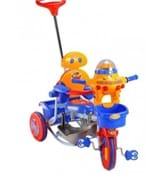
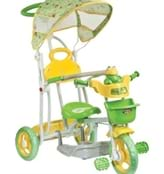
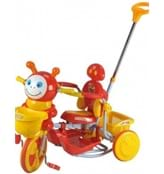
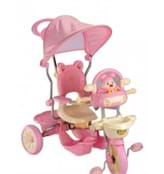
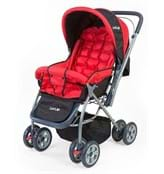
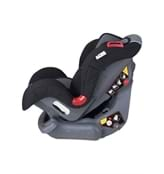

WHAT DO YOU THINK?